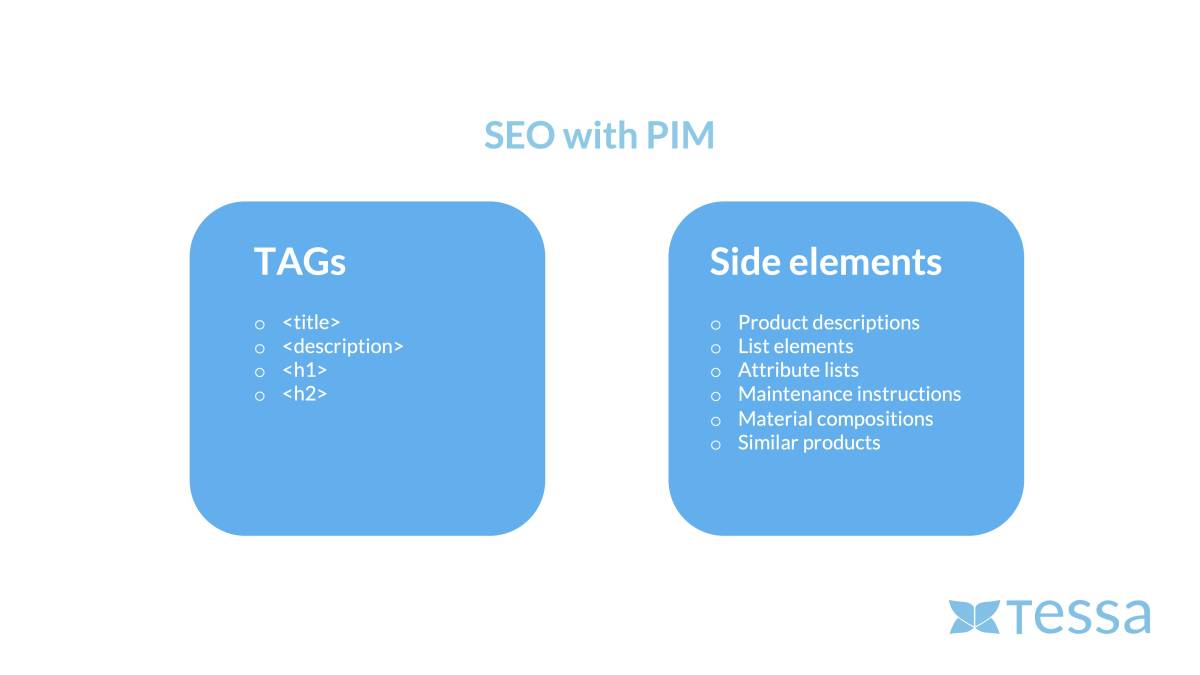Do you run a webshop? Do you present many products on the Internet? Then you might be looking for work simplification in one place or another. The more products you have, the more difficult their management becomes, so it makes sense to have a tool that can easily and safely handle large management tasks. Of course, e-commerce tools have ways to import products in smaller quantities, check the data for completeness and weed out errors. However, it is much more convenient to accomplish this one step earlier. This again makes it possible to use the prepared data in other places as well. This starts, for example, when you want to enclose analog flyers or brochures with the packages to your customers. These have to be produced beforehand and for this you need product data. Even if your core business is online trade - the platform independence of the data through the use of Product Information Management systems, in short PIMs, is very important and helps you to save time and money on the one hand and to make significantly more sales on the other hand.
Using the PIM to effectively bring products into the web store
Whether you are a retailer or a manufacturer - a web store is now part of your business if you want to offer more than just local products. Entering products manually in the webshop is possible in principle. But how should that work if you have more than 1,000 products? - It's really tricky, time-consuming and error-prone. You would have to look at each product individually and consider whether the data is complete and the overall presentation is okay. That doesn't just sound like a lot of detailed work, it is. Such activities are fun only to a limited extent. It is much smarter to check the data in a spreadsheet for completeness and correctness. This certainly works, but it is not really convenient and efficient, as the following considerations show: Usually you have different product types. For example, for pants there is an attribute leg length that should be filled and for shirts it is the attribute arm length. You don't need a value for leg length at this point etc.. So you would need many different tables and a lot of confusion is inevitable. If you work with a PIM, you can check the data for correctness, completeness and the correct data formats during import. Once you have complete data sets, you push the products over to the store. The PIM makes your life much easier and - more importantly - much faster. You succeed in transferring products into a saleable state more quickly in terms of data.
Enrich data for EC and SEO with Product Information Management
Of course, you can also combine and compile data from the PIM for your web store. In this case, the PIM also increases your efficiency and you have the best cards. What many of our customers do: Map numerical values into texts. For lighting, for example, it is possible to translate a Kelvin value of 2,700 into "warm white" and 4,000 into "cool white". These are then the terms that customers search for in the web store. Sure - there are one or two people who know the Kelvin values. But most will be looking for warm or cool light. So what do you have to do? Think about which characteristics of your products are most relevant for your customers. Or even better: analyze which search terms are usually used for the products you offer. These are search engine optimization tasks whose results you can map in the PIM. Then you look in this course, whether you have these terms already as text in attributes. If this is not the case, then you translate the relevant attributes into text values by rule. From these many small pieces of the puzzle, you then put together individual titles, descriptions, headline texts, etc. for the product detail pages of your store - all relevant SEO factors. To keep things tidy, you do this individually for each product class in your store. For pants you add the leg length, for shirts the arm length - just to stay with the example.
Product Information Management plays a major role in optimizing your product detail pages - and you can also integrate the work of an SEO service provider. However, the single page is not everything. In order to effectively increase your sales, you will want and need to place many products in different places in your store. In the case of clothing, it is often the type of clothing - blouse, dress, pants, etc. - and the context of use - business, leisure, festivals & parties, etc. So it is important for you to assign your products to categories via tagging. Then these are formed by the PIM - for example Akeneo - and passed on to the store. By the way - many companies make the mistake at this point of simply assigning their products to as many categories as possible and doing without something like a "suitability factor". This leads to the customer not finding the most suitable products first, but rather a jumble of possibly suitable products. Be firm at this point and demand - whether from suppliers or your colleagues in product development - the most suitable category.
What about product images?
If you've been following our posts for a while, you know that a PIM doesn't just pass attributes and categories to a webshop or other systems in isolation - for linking to imagery, the PIM also plays a significant role. Whether it's photos, drawings, product descriptions/exposés, videos, certificates, user manuals, etc. - PIMs like Akeneo almost always use a DAM like our TESSA DAM here to optimally and quickly insert assets into websites. We will describe exactly how this works in our next post.
Conclusion
PIM, an important tool in e-commerce
You determine headlines, short and long texts, add keywords and lists. Operating and maintenance instructions can also help. In addition, you enrich your texts so that they are available for SEO in an optimal form - all this in a form adapted to the respective platform.







